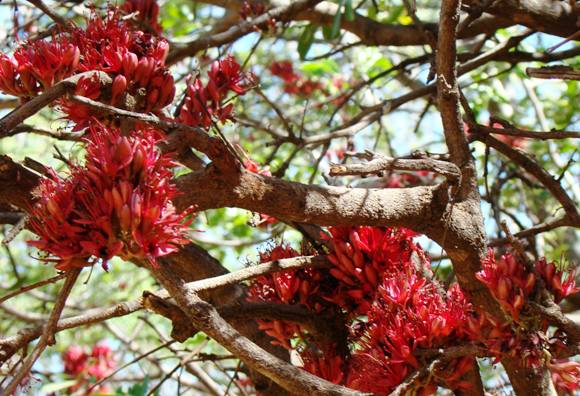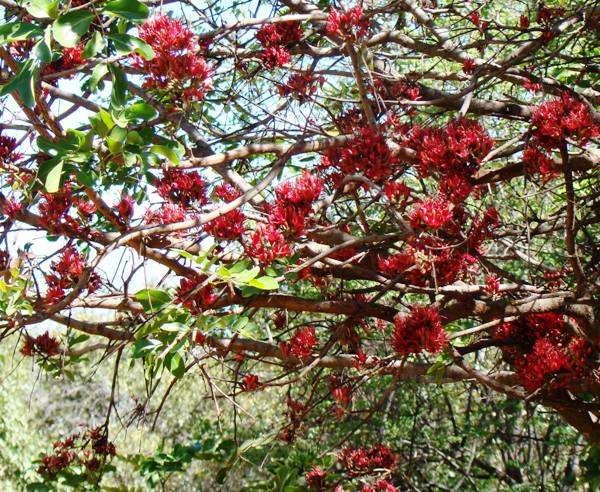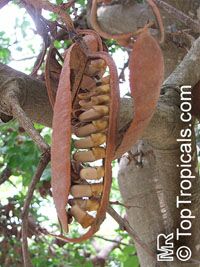|
Botanical name |
Schotia brachypetala |
|
Other names |
Weeping boer-bean; African walnut; parrot tree; huilboerboon (Afrikaans) |
|
Family |
Caesalpinioideae |
|
Dimensions |
A large, spreading, leguminous tree with a round crown, up to 16 m in height |
|
Description of stem |
Brown or grey and rough; a single stem tree, branching may commence low down |
|
Description of leaves |
Imparipinnate with 4 to 6 pairs of opposite leaflets; oblong, characteristically asymmetric with entire margins, sometimes hairy and wavy; young leaves lighter green and shiny, sometimes reddish for a short period, making the spring appearance very attractive; mature leaves are dark and glossy |
|
Description of flowers |
Dense panicles of maroon flowers appear on the old wood, with the short petals often falling early (brachypetala = short petals), leaving the conspicuous filaments on show; the dripping nectar produced in profuse quantities in spring, before the normal summer rainy season, causes the 'weeping' alluded to in the common name; the flowering time varies between regions and even between individual trees; a five year old tree will normally flower; attracts a variety of birds (including parrots) and insects |
|
Desciption of seed/fruit |
Flat and hard pod of up to 10 cm in length, containing light-brown flat, hard seeds attached to a conspicuous yellow aril |
|
Description of roots |
|
|
Variation |
Flower colour and flowering season variations |
|
Propagation and cultivation |
Grown from seed or truncheons; seed germinates very easily; the tree is slow growing in colder, drier climates and may remain smaller, faster in warmer, high rainfall parts of its distribution range |
|
Tolerances |
Does not thrive in too dry climates |
|
Uses |
Planted in bigger gardens, parks and along streets as an ornamental tree; a bark decoction has been used for the treatment of heartburn and hangovers, also for dysentry and diarrhoea; the mature seeds are sometimes roasted and eaten; the leaves are browsed by game |
|
Ecological rarity |
Common, not threatened |
|
Pests and diseases |
|
|
Other |
As elephants are said to become intoxicated from marula fermenting in the sun, there is a report (with picture) from Sydney's Botanical Garden in Australia of a rainbow lorikeet indulging in S. brachypetala nectar in the sun, apparently capable of becoming intoxicated if the fermentation of the sugary liquid proceeds far enough according to the local Garden Curator (www.smh.com.au)! |
|
Location |
Dry bushveld, deciduous woodland, along river banks |
|
Distribution (SA provinces) |
Kwazulu-Natal, Eastern Cape, Mpumalanga, Limpopo, North West |
|
Country |
South Africa, Swaziland, Mozambique, Zimbabwe, Botswana |




